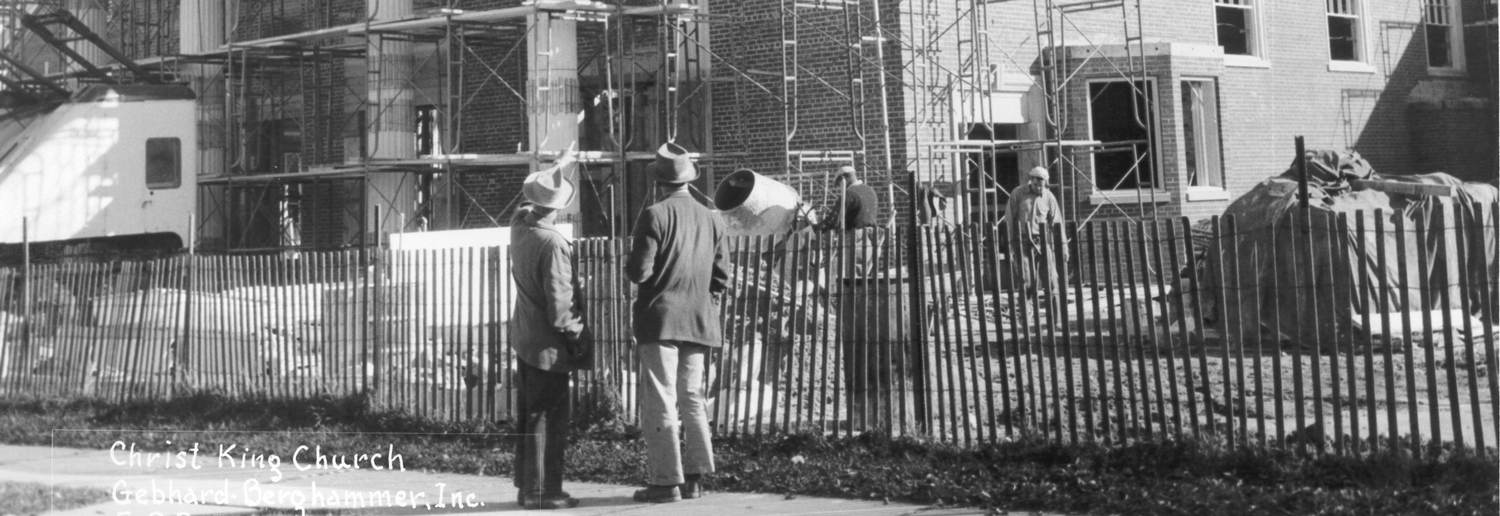
In a spirit of thanksgiving, community and commitment, it’s helpful to review the exciting, sacrificial, and sometimes challenging story of Christ King Parish.
The prosperous decade of the 1920s saw increasing numbers of people move from the City of Milwaukee to the suburbs. In 1930, coinciding with this growth, Milwaukee Archbishop Sebastian Messmer purchased 18 city lots on what then was known as Swan Road, between Center and Clarke Streets. The Archdiocese of Milwaukee secured the land with the intention that it would be the site for a future Catholic congregation. However, for various reasons, the most probable being the severe economic downturn of the Great Depression, the proposed Catholic congregation was not immediately developed, and the property purchased in 1930 sat idle for nine years. In 1936, Archbishop Samuel Stritch responded to a government inquiry questioning whether the Swan Road property should retain tax-exempt status. To satisfy the state’s inquiry, the Archdiocese of Milwaukee deeded the land (the 18 lots purchased in 1930) to The Congregation of The Christ King but agreed to delay requiring the congregation to pay for the land for five years.
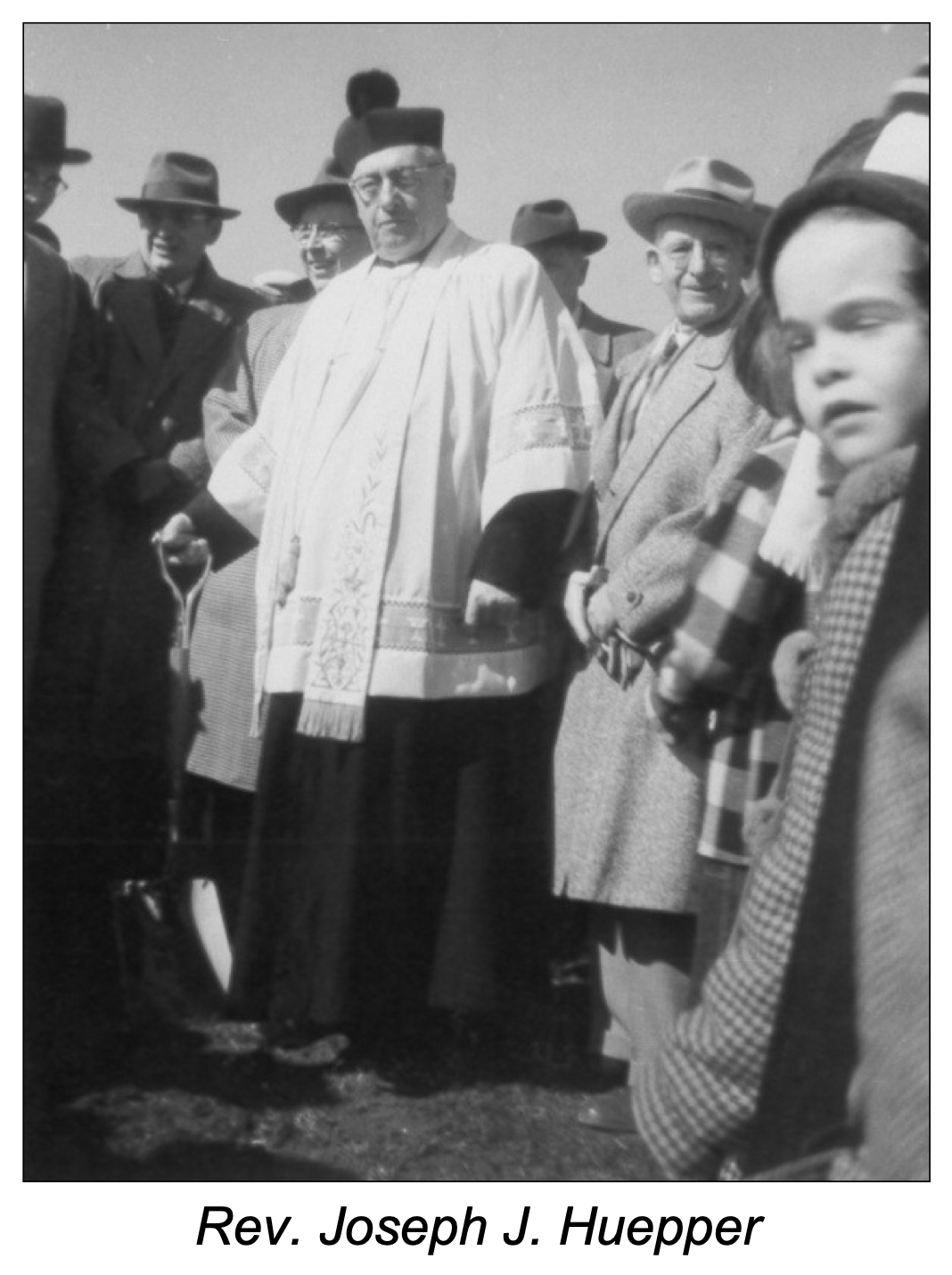 Christ King Parish finally became a reality in the fall of 1939. On September 28, 1939, Archbishop Stritch appointed Rev. Joseph Huepper as the first pastor of the new congregation. Christ King Parish officially came into existence on October 14, 1939. On October 16, 1939, two days after the archbishop’s decree, the first meeting of Christ King Congregation was held at Mount Mary College.
Christ King Parish finally became a reality in the fall of 1939. On September 28, 1939, Archbishop Stritch appointed Rev. Joseph Huepper as the first pastor of the new congregation. Christ King Parish officially came into existence on October 14, 1939. On October 16, 1939, two days after the archbishop’s decree, the first meeting of Christ King Congregation was held at Mount Mary College.
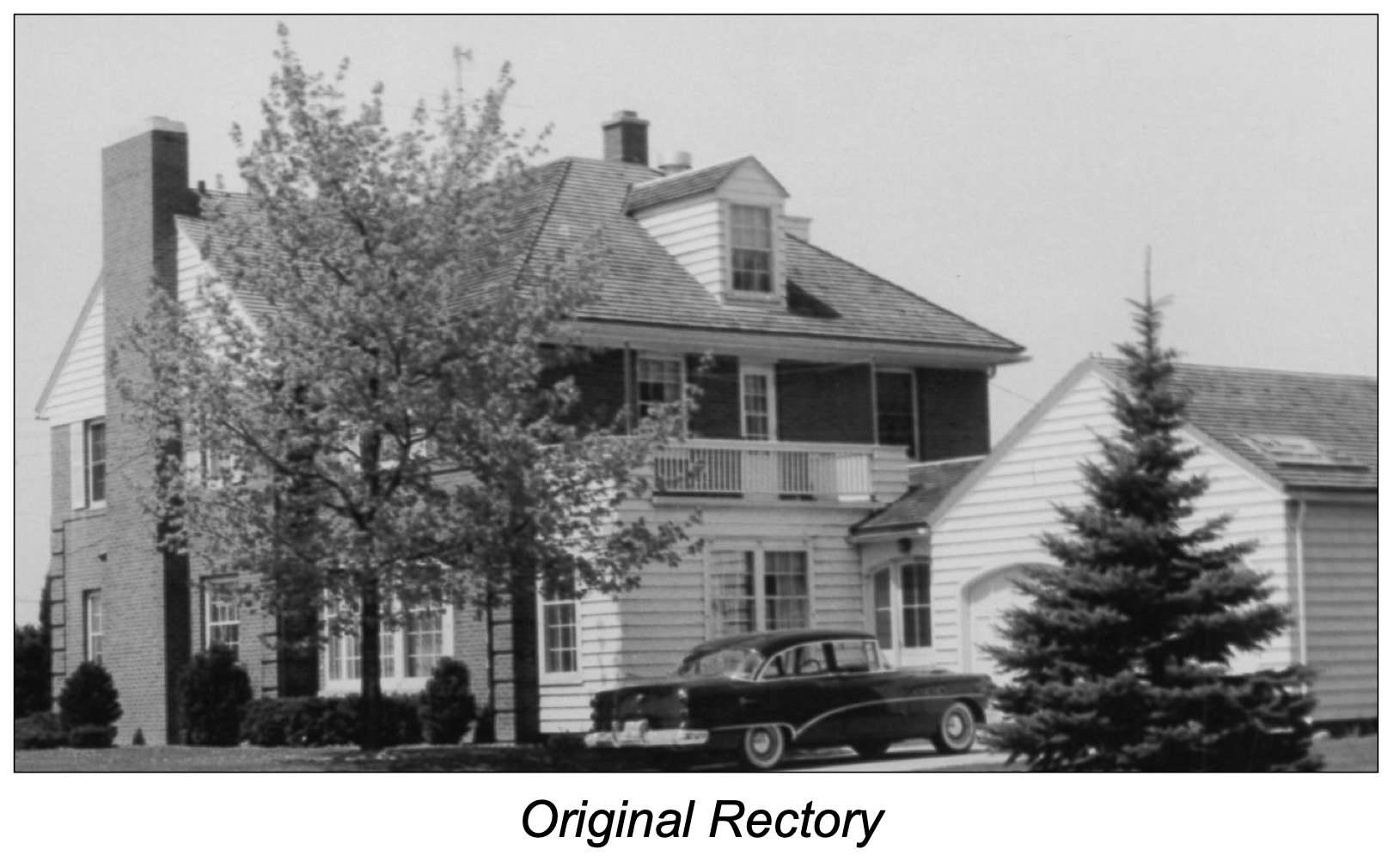 On November 26, 1939, the first of many Building Fund Campaigns commenced, with initial pledges amounting to $10,000. At the Christ King Building Committee’s first meeting, January 3, 1940, the committee recommended erecting a school, boiler house, and permanent rectory built in colonial style architecture.
On November 26, 1939, the first of many Building Fund Campaigns commenced, with initial pledges amounting to $10,000. At the Christ King Building Committee’s first meeting, January 3, 1940, the committee recommended erecting a school, boiler house, and permanent rectory built in colonial style architecture.
On May 29, 1940, ground was broken for what was then called, “the permanent Rectory.” The Rectory was ready for occupancy in October 1940. When the “New Church” was constructed in 1955, large front and back additions were added to the Rectory along with some reconfiguration of existing space.
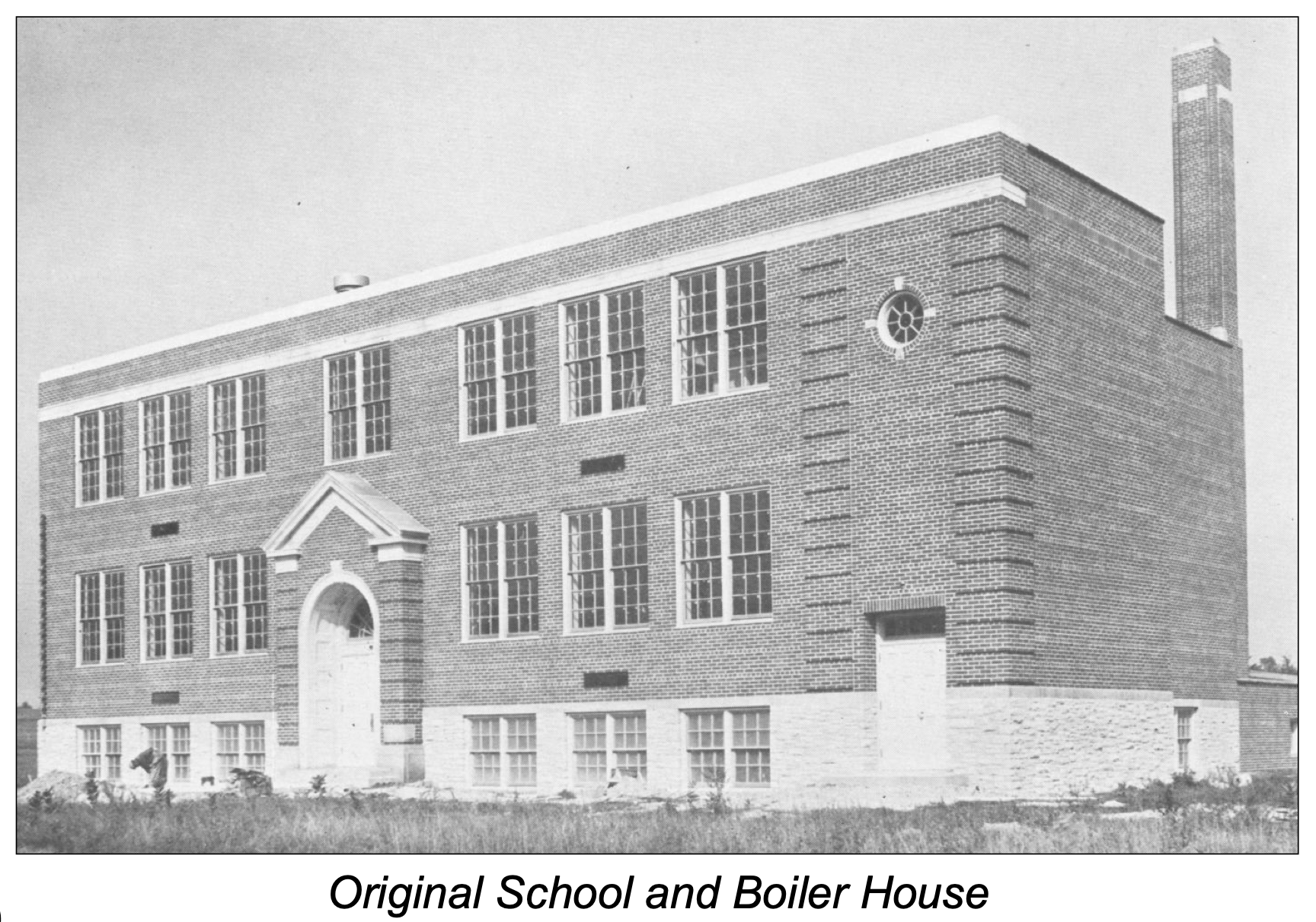 In September 1940, Christ King School opened in its new building. The first floor contained four classrooms, the second floor was the parish chapel, and the basement was divided into a meeting hall, small kitchen, and restrooms. Staffed by four School Sisters of Notre Dame, Christ King School welcomed 118 children into 4 classrooms. September 1940 also marked the first time Holy Mass was offered in the new Christ King Chapel, which comprised the entire second floor of the school building.
In September 1940, Christ King School opened in its new building. The first floor contained four classrooms, the second floor was the parish chapel, and the basement was divided into a meeting hall, small kitchen, and restrooms. Staffed by four School Sisters of Notre Dame, Christ King School welcomed 118 children into 4 classrooms. September 1940 also marked the first time Holy Mass was offered in the new Christ King Chapel, which comprised the entire second floor of the school building.
In June 1943, Christ King Parish secured an additional land purchase. For the sum of $4,560, the Congregation acquired six lots adjacent to the original property along Center Street between Swan Road (92nd St) and 91st Street. These six lots, located within the City of Milwaukee, gave the congregation clear title to the entire square block. The majority of Christ King Parish is within the City of Wauwatosa, however, the north end of the campus from approximately the middle of the gym to Center Street remains within the City of Milwaukee.
Christ King Parish’s third worship space, the “New Chapel” (current North Hall), wasn’t ready for use until June 1947. The New Chapel was adjacent to the north side of the existing School.
On December 8, 1947, the parish officers and directors unanimously voted to proceed with the erection of a Sister’s Convent. Excavation commenced on February 16, 1948, and in July 1949, nine nuns moved from the Notre Dame Convent in Elm Grove to the new Christ King Convent.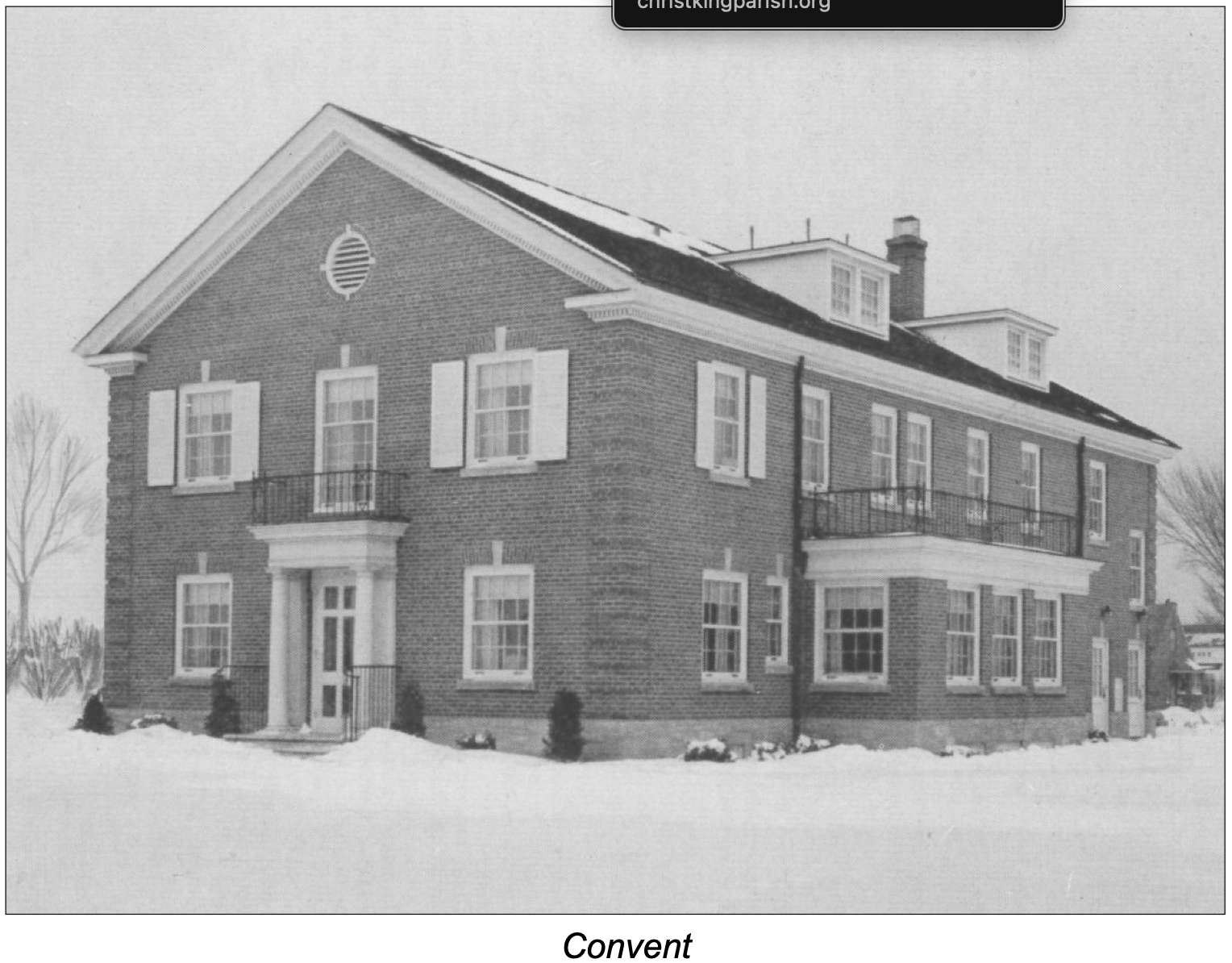
The 10th Anniversary of Christ King Parish was celebrated October 22-30, 1949, with a Solemn Novena of Thanksgiving and the annual Forty Hours Adoration of the Blessed Sacrament.
By the early 1950s, five Sunday Masses were needed to meet the worship needs of the rapidly growing parish; Mass times were 7:30, 8:00, 9:00, 10:30 and 11:30 am. Several Masses saw standing-room-only on a regular basis, with worshippers filling the stairs leading down to the Chapel (North Hall).
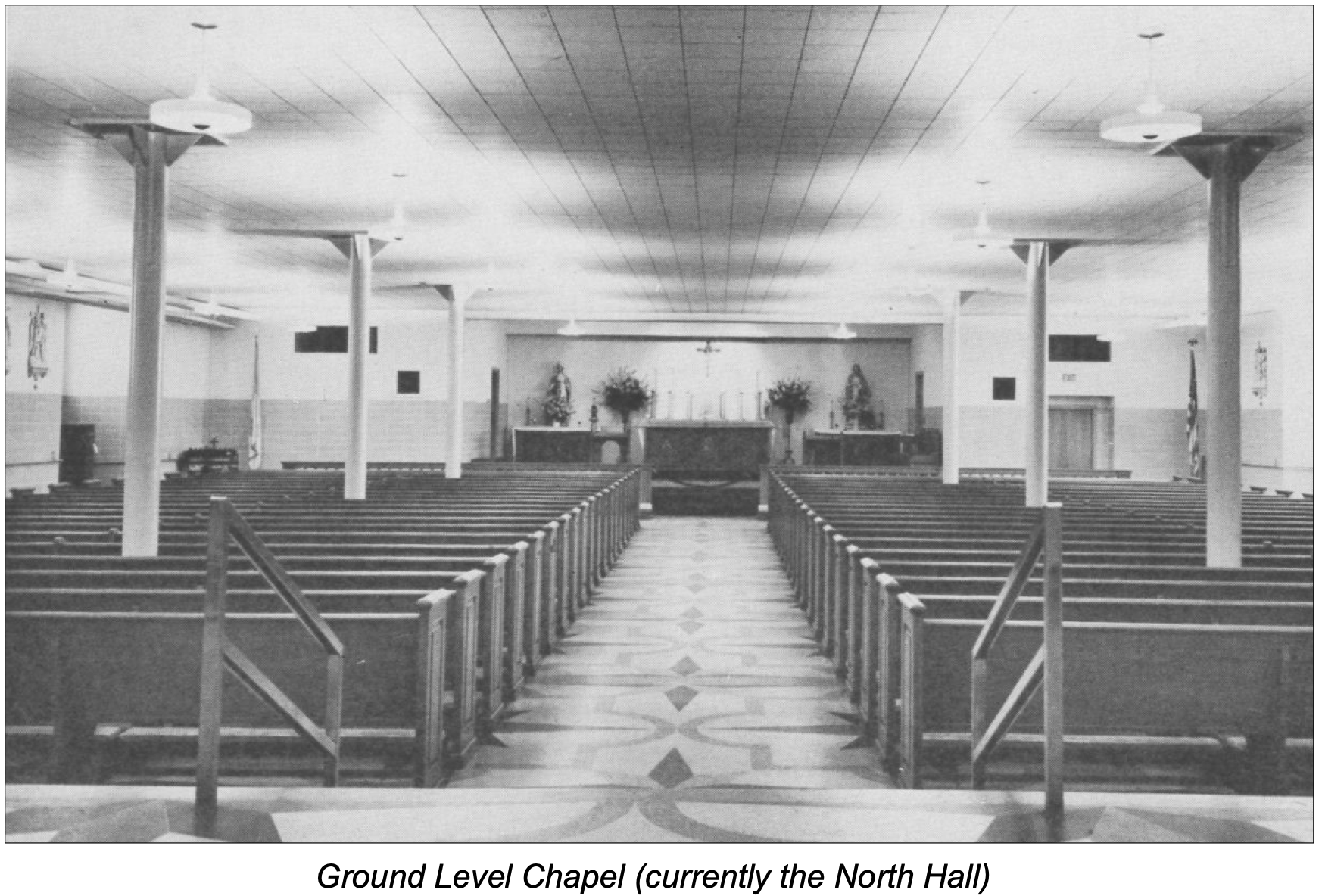
On April 26, 1950, the Building Committee agreed to construct an addition to the south side of the school. The new addition would include eight classrooms, a basement auditorium (South Hall), kitchen, a garage (old South Hall Annex, now a classroom) to house the parish’s school bus and the mechanical equipment of the parish, and a school library (above the garage).
On March 28, 1953, the Building Committee established a Foundation Fund for the construction of the “New Church.” In the first week of the campaign, $222,885 was pledged. Archdiocesan approval for the New Church building project was granted in January 1955, and Vatican approval was received in March 1955. Construction of the New Church and adjacent buildings would take almost one- and one-half years.
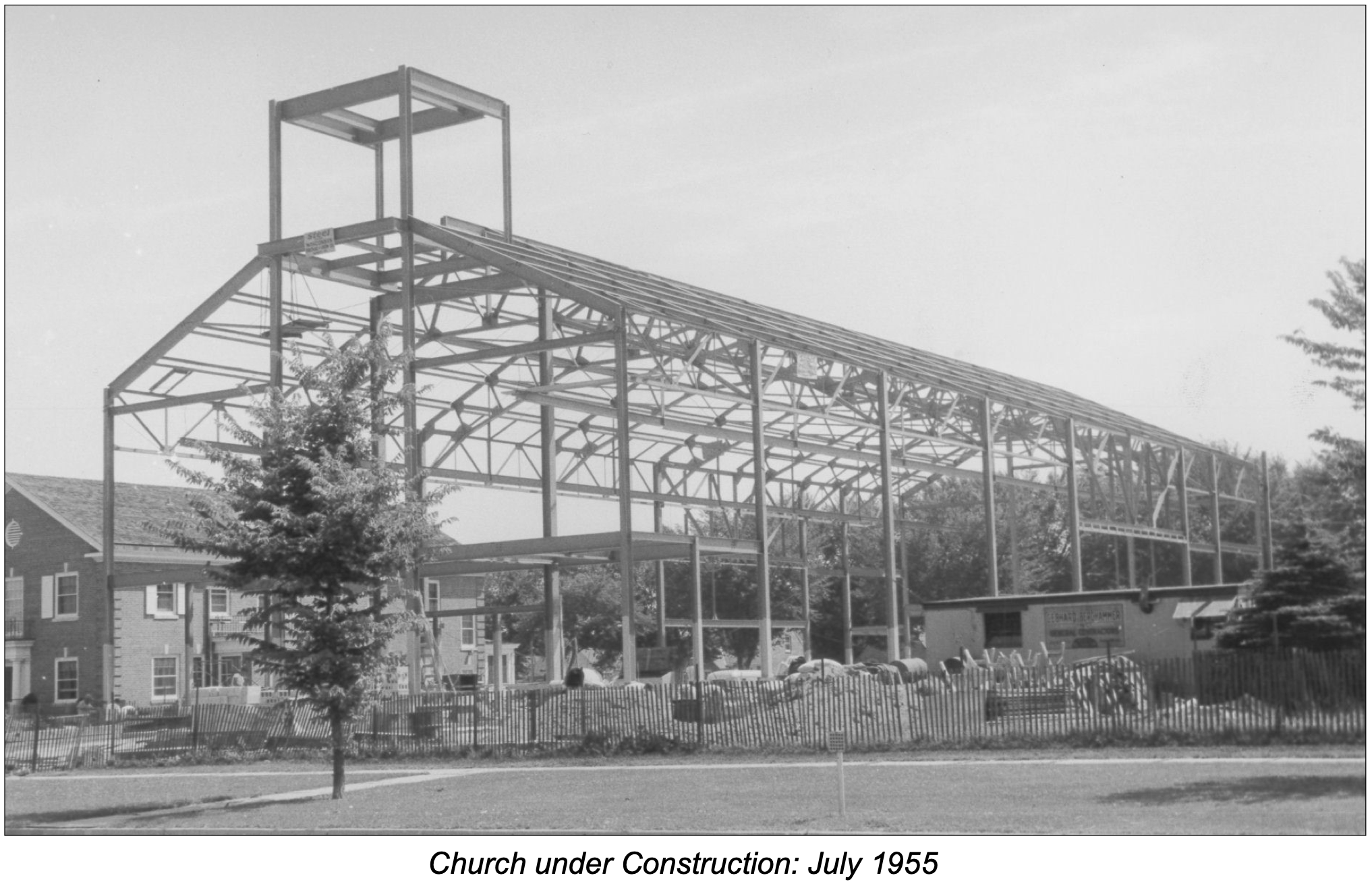
December 16, 1956, marked the formal dedication and blessing of the “New Church” by Archbishop Albert G. Meyer. At the time the New Church was completed, Christ King Parish claimed 1,600 registered families.
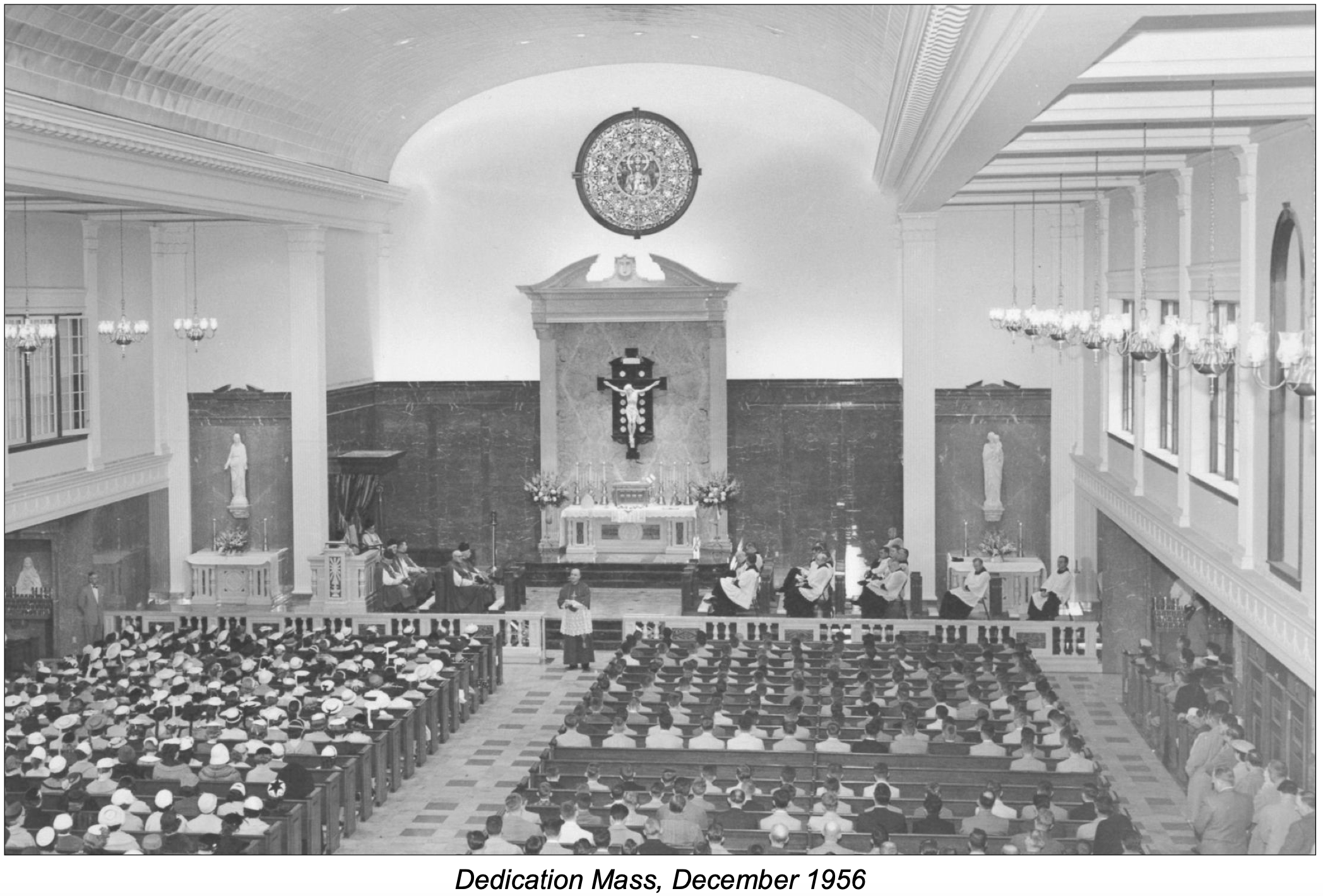
The school’s largest enrollment was realized at the start of the 1960-61 school year. Three classrooms for each grade (grades 1-8)-managed by a teaching staff of 18 nuns, 3 laywomen, and 3 laymen-handled 1,712 students. Christ King School graduated a class of 3 in 1941, and by the 1960s consistently graduated classes as large as 165. For the 1991-1992 school year, Christ King added kindergarten classes (half-day K4 and half-day K5) for the first time.
On November 29, 1964, the new “Gym Addition” was blessed by Archbishop William Cousins. In conjunction with blessing the new addition, Mass and lunch were held to celebrate the parish’s 25th Anniversary.
On September 29, 1965, founding pastor Reverend Monsignor Joseph Huepper died at the age of 70. Most Reverend Roman R. Atkielski, Auxiliary Bishop of the Archdiocese of Milwaukee, was appointed to succeed Msgr. Huepper as Pastor of Christ King Parish.
Christ King lost its second pastor with the June 30, 1969 death of Bishop Atkileski. Atkileski was succeeded by Most Reverend Leo Brust, Auxiliary Bishop of Milwaukee. Bishop Brust remained Christ King’s pastor until he was named Vicar General of the Archdiocese in 1978. Monsignor Francis Beres became the fourth Pastor of Christ King Parish in 1978.
Christ King was privileged to have one of its parishioners ordained as one of the archdiocese’s first permanent deacons. Arthur Dallman was ordained to the permanent diaconate on December 26, 1975, and served Christ King Parish for 38 years until he died in 2013 at the age of 92.
Fr. Ronald Crew was named Christ King Parish’s fifth pastor on January 1, 1986. Fr. Crew succeeded Monsignor Beres who had been named Vicar of Religious for the Archdiocese of Milwaukee. In 1987, Fr. Crew sent a letter to parishioners announcing that the Feast of Christ the King, which falls on the final Sunday of Ordinary Time, would become the parish’s patronal feast day.
Rev. Dennis Ackeret became Christ King’s sixth pastor in June 1990. Fr. Ackeret would remain Pastor of Christ King Parish until 2003 when he was assigned pastor of Saint Therese Parish in Eagle. In June 2003, Msgr. T. George Gajdos was named Christ King’s seventh pastor. Father George served Christ King until his retirement in December 2012. In June 2013, Fr. Phillip Bogacki became Administrator of Christ King Parish, and in 2014, was named Christ King’s eighth pastor.
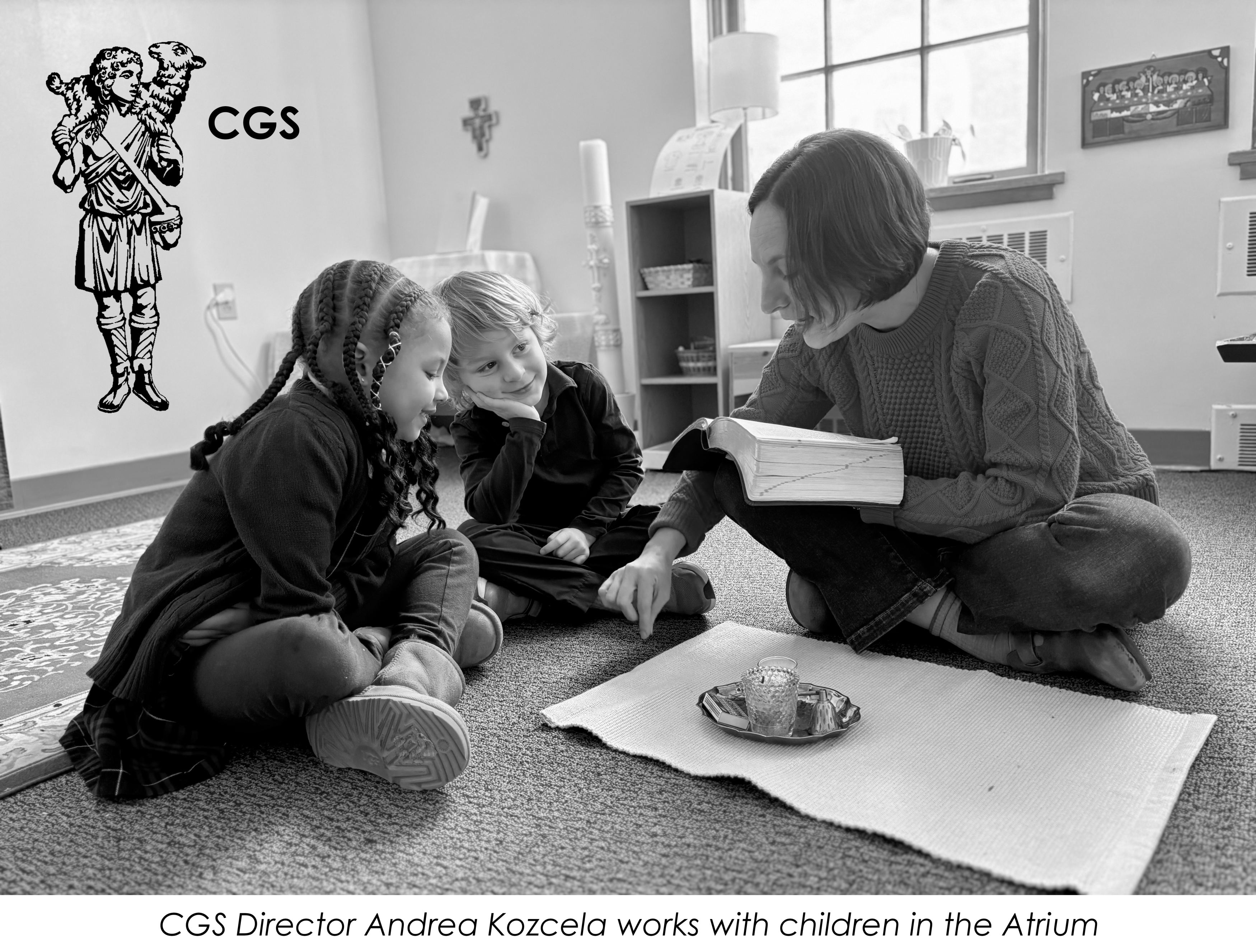
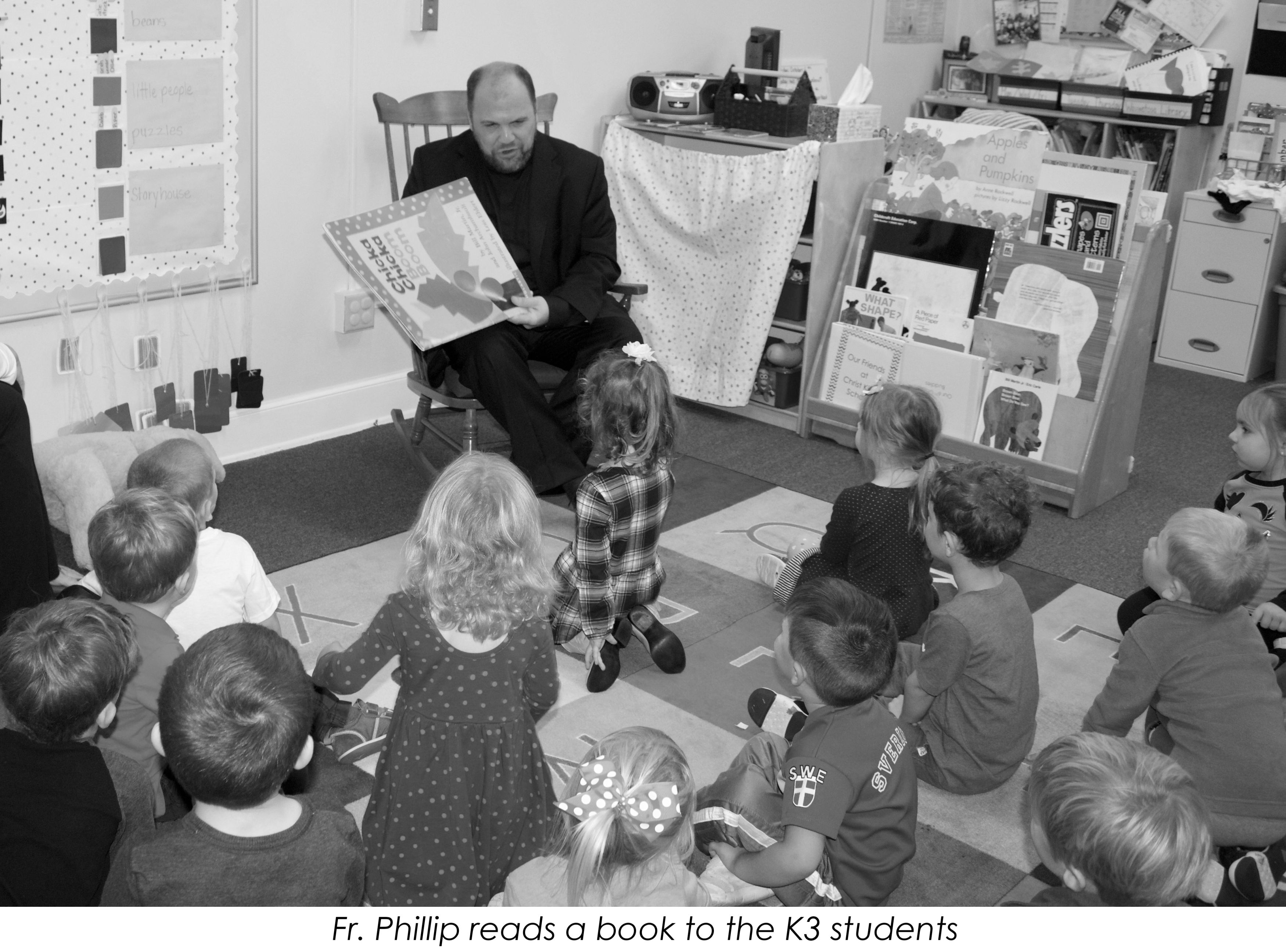
In the mid-2010s, the school added a K3 program and before and after-school care programs. The parish adopted the Catechesis of the Good Shepherd (CGS) methodology for use in religious education programs and some school programs.
In 2024, Christ King Parish and Saint Bernard of Clairvaux Parish (established in 1911 at 7474 Harwood Avenue) embarked on a merger, announced on March 17, 2024. The parishes requested the merger to strengthen the Catholic Church’s spiritual mission in the area by rethinking building use. The Wauwatosa area had erected five parishes, with six more in nearby neighborhoods, to respond to the influx of immigrants and the later “baby boom” of the 1940s and 1950s. As sacramental practice declined starting in the late 1960s and families became smaller, the area parishes, as a group, had been underperforming for several decades. The newly organized parish decided to utilize the Christ King name and one campus, selling the Saint Bernard property to a developer who would build an apartment residence on the Saint Bernard site. Masses of Thanksgiving, the final liturgical celebrations at the Saint Bernard property were held on August 17 and 18, 2024, marking the beginning of the reconfigured parish’s future. The property sale was finalized on December 20, 2024, and the parish merger was completed in early 2025.
